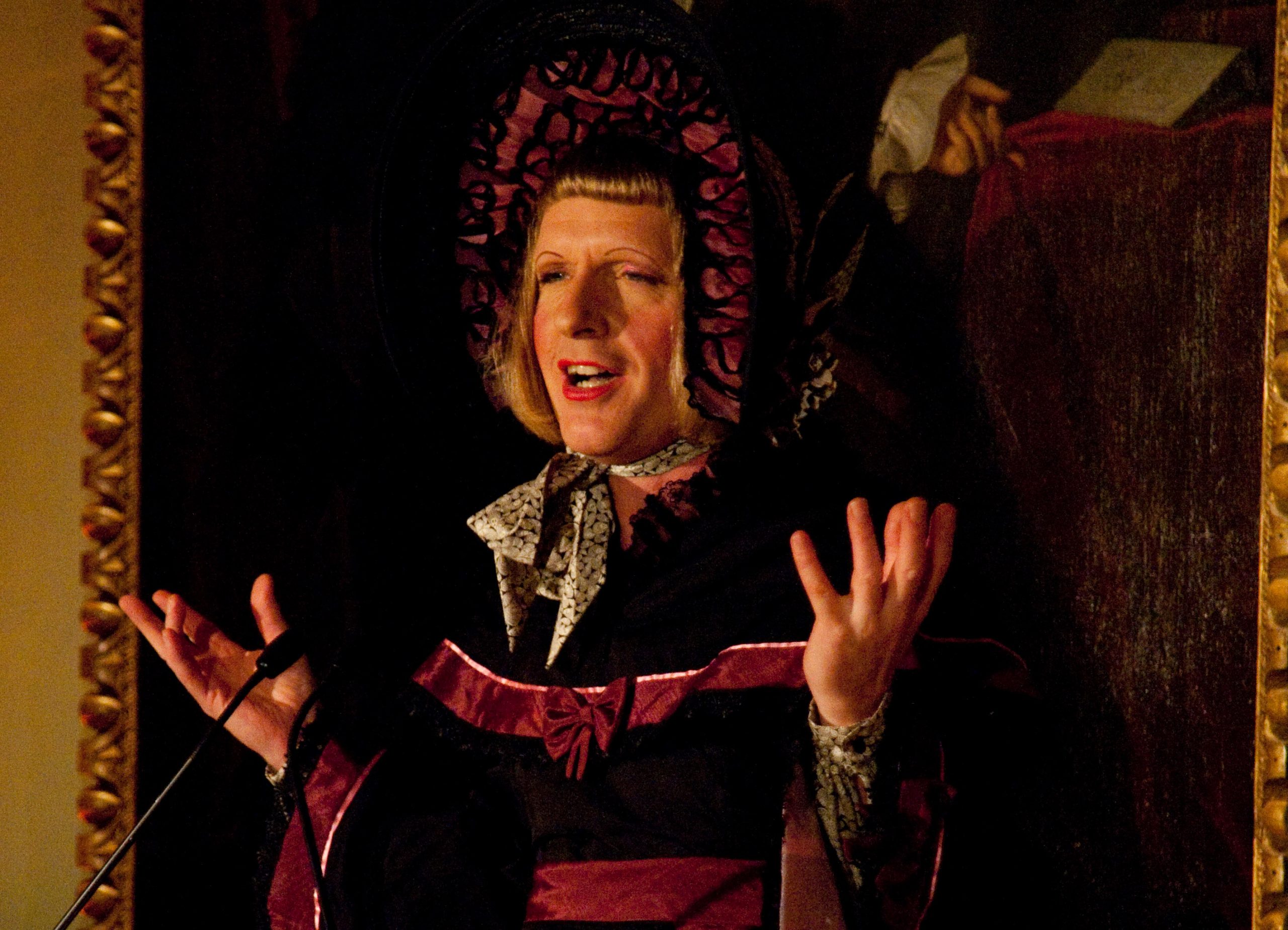Originally published on Spoonfed, March 2010.
Grayson Perry perches, upright, amidst lush Rococo splendour. Clad in a rich black Victorian ensemble trimmed with burgundy detailing, hefty black clogs, pink tights, and an enormous bonnet, Perry cuts quite a figure: simultaneously grand, vulnerable, arch and honest. We’re in the Court Room at the Foundling Museum , where Perry is about to become the Museum’s second Hogarth Fellow, after Richard Wentworth in 2009.
The Foundling Museum launched the concept of the Foundling Fellows last year. The first three were Damon Albarn, Wentworth and novelist Jacqueline Wilson, and this year, it’s the turn of cellist Julian Lloyd Webber, TV presenter Cerrie Burnell, and Perry. But what does the role actually entail? “I’m not quite sure yet,” he admits. “I just said yes as it sounded like a nice thing to do!” Queue a bout of raucous cackling: “I’m a kind of figurehead, I think. I’ll turn up to parties in a nice outfit, and generally support the cause.” He also has an idea for a project later in the year which will engage local children with the Foundling Museum.
The museum is very much about childhood, and different attitudes to children across different historical periods and societies, themes that crop up repeatedly in Perry’s work. “There’s an autobiographical thread in all art,” he explains, “it’s part of who you are. I’m interested in what makes us who we are, psychotherapy and all that. And of course that looks at our childhood, because that’s where we become who we are, and also take on our major emotional problems. How does that then play out against the wider patterns of society?”
Perry’s own difficult childhood has been well-documented and it features frequently in his art – particularly in the earlier works. I wonder how these experiences have affected his own experiences as a father. “I learnt how to do it OK,” he says. “I didn’t make any major mistakes. I do think fathers tend to learn fatherhood, rather than having any intuition towards it.” And then, poignantly: “but some fathers learn better than others…”
The current exhibition at the Foundling Museum explores this often difficult relationship between parents and their children. With pieces by Tracey Emin, Paula Rego and Mat Collishaw dotted throughout the museum, the exhibition provides an apt new angle on the prestigious collection of work by Hogarth, Joshua Reynolds and Thomas Gainsborough. In the corner of the Court Room, where we’re sitting, hangs a group of tiny children’s outfits, “instigated,” Perry assumes as he turns to look, “by Ms. Emin.”
When I ask whether he’s an Emin fan, my question is greeted with cold silence, Perry’s big black bonnet blocking his face completely. As I begin to worry that I might have put my foot in it, Perry erupts into another huge cackle. “She’s interesting. I’m glad she exists. But let’s face it, I’m the world’s worst audience for contemporary art. My influences and loves in the art world stopped at around 1950. I like the products of entire cultures – I like popular religious art from India say, or Japan. I like Gothic altarpieces. I like Hieronymus Bosch. And I like Hogarth, obviously! He’s quite a rocker.”
Hogarth was a major benefactor of the Foundling Hospital, and the Museum includes several fine works by the eighteenth century artist. Perry sees certain parallels between his own work and that of Hogarth: “I’ve always liked Hogarth very much and he seems like a sort of kindred spirit. I’ve often been compared to him in terms of being interested in making art about social issues, and I suppose I have a kind of robust Englishness in my position, which I share with Mr. Hogarth. So, I expect I was a fairly obvious candidate for the fellowship.”
But Perry is less sure what Hogarth might have made of him: “Hogarth would throw his hands up in horror to imagine some retrogressive type like me who makes pots, that were pretty old tick even in his day. If he was here now he’d probably be directing EastEnders or something. He’d probably have a website! Something people are actually interested in, as opposed to pottery or contemporary art.”
